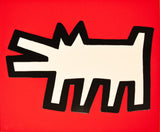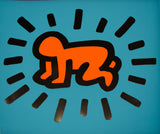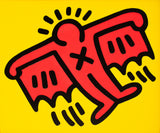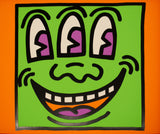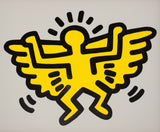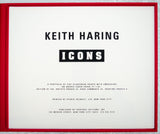David Benrimon Fine Art Gallery
Keith HaringIcons
Keith Haring
Icons (portfolio), 1990
Lithograph on Arches cover paper in original portfolio
21h x 25w in (each, unframed)
Edition of 250
Each numbered, signed and dated by Julie Gruen (executor for the Keith Haring estate) and with estate stamp
Keith Haring (b. 1958) was an American Pop artist whose graffiti-like style grew from New York City street culture of the 1980s. In 1990, Haring released Icons, a set of five embossings each bearing a single symbol. Icons are rendered in a simple linear style of outlined colorful figures, inspired by the shrill pictography in advertisements and billboards. He used these luminous colors, idols and symbols from the masses to respond to many of the relevant issues of the times and NYC street culture of the 1980s. As a social activist, Haring communicates his concern for burning issues, such as violence, money, sex, religion and racism, through the icons. Haring’s emblems have become his signature hieroglyphic style that reflects his fight against all oppressions and questions all authority.
(1) The first icon is Barking Dog, which has become Haring’s trademark and seminal character used throughout his work. The barking dog doesn’t have a specific symbolism, rather it stands for all abuses of power, government, and oppressive regimes that demand obedience and represents authority.
(2) Radiant Baby is a crawling baby with lines emanating from around its body. The icon is derived from religious Christian iconography of the radiant child or radiant Christ, and the rays indicate spiritual light glowing from within. Haring first used the baby in his work as a subway artist as his main tags. The symbol represents youthful innocence, goodness, potential and purity.
(3) Haring’s Three-Eyed Monster is a symbol for greed. Its presence in Haring’s artworks indicates hellishness, fear and death.
(4) The Devil icon is a fire-red winged devil with a cross on his chest flying upwards. The Angel icon is another religious motif Haring employs to comment on the existence of heaven and hell, often from an anti-religious perspective. The Devil and Angel icons exemplify Haring’s fascination with this subject.







